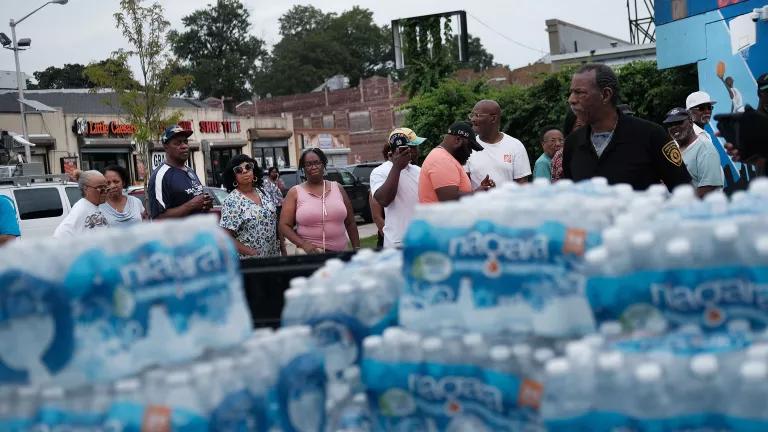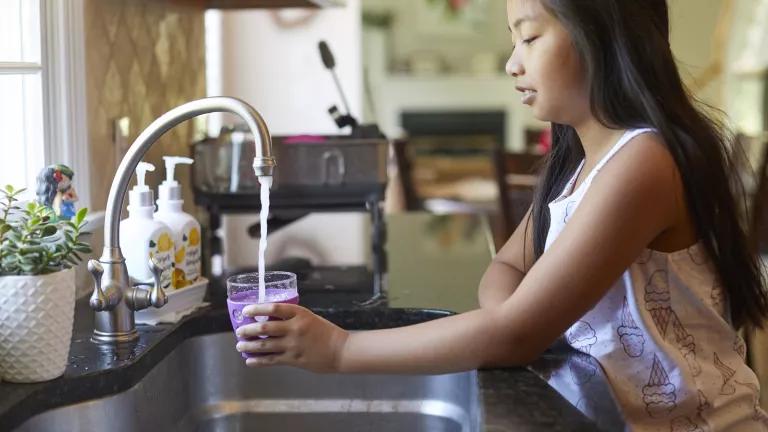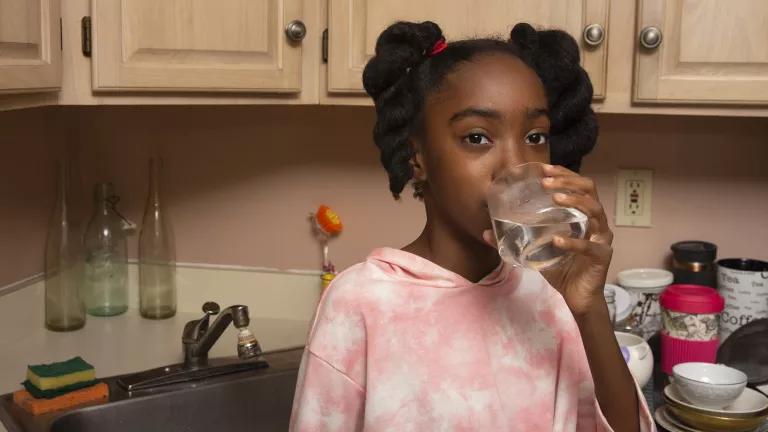Mass Water Shutoffs Loom, Most States & the Feds Remain AWOL
Millions of cash-strapped consumers and many water utilities urgently need help.

[Updated 12/22/20 to reflect current status of state moratoria and federal assistance funds appropriated on Dec. 21, 2020. For the most current status of state moratoria, see this blog that is being updated regularly.]
As COVID-19 rages nationwide and our economic crisis continues, access to safe housing and essential utilities, such as home water and energy service, are under threat like never before. A mass wave of water service shutoffs is imminent unless state and federal authorities quickly ban those disconnections, require safe reconnections, and fund debt relief for low-income water customers. Millions of cash-strapped consumers and many water utilities urgently need help.
For many low-income households, especially people of color, unaffordable water costs and the threat of shutoffs are not new. But for these same people, the gap between their bills and what they can afford has grown much larger during the pandemic. And more people than ever are facing unaffordable water bills.
But we don’t even know the full extent of the problem. Most states and federal government do not require water systems to report on shutoffs or customer arrears, whether during the pandemic or otherwise. But data from the few states that have required reporting make clear that many millions of Americans are facing water disconnection, and many have already been shutoff. For example, in Illinois, where privately-owned utilities serve only ten percent of the population, the two largest privately-owned water systems (American Water and Aqua America) disconnected about 17,000 people in October and November. In Michigan, data from a subset of publicly-owned water systems show 800,000 people at risk of shutoff as of August 31. Incomplete reporting in North Carolina showed at least 720,000 people in arrears at the end of July, and 390,000 so deep in arrears that they were eligible for shutoff, just among the privately-owned utilities that serve 8 percent of the population.*
Only eight states (plus the District of Columbia) currently have water shutoff moratoria in effect. Customers’ debt is continuing to mount, potentially also jeopardizing the financial health of some smaller water systems.

Two of my NRDC colleagues wrote last week about the utility shutoff and eviction crises facing millions of families, and the solutions at hand. These crises are inter-related and must be solved together. You can’t possibly stay “Safer at Home” during the pandemic without both a home and running water, heat, and electricity in it.
The solutions for water largely mirror those for energy. They include: Moratoria on water shutoffs and liens, safe reconnection of anyone previously disconnected, financial relief for struggling customers, and comprehensive data reporting by utilities.
Yet, during COVID-19—just as before the pandemic—water utility customers have had far less protection or financial support than energy customers. For example, only a minority of states adopted water shutoff moratoria at any point during the pandemic. Most have already expired. And there are no pre-existing state or federal programs to help low-income customers afford water and sewer service.
On December 21, 2020, Congress finally allocated funds -- $638 million -- for low-income water and sewer customer assistance as part of the $900 billion COVID-19 relief legislation. This marks the first-ever federal funding for low-income water and sewer assistance and will help alleviate some of the ballooning customer debt. But it is less than half of the $1.5 billion included in legislation the House passed back in May 2020 (and again in revised form in October). Also, this new COVID-19 relief legislation does not include a nationwide utility shutoff moratorium, which was included in the earlier House-passed bills.
To meet the urgent need to preserve water service during the pandemic—and keep customers from being mired in debt they cannot escape—policy makers must understand important differences between the water and energy sectors and adapt the solutions as needed. Getting things right now will help lay the groundwork for the lasting solutions we need to keep water affordable for low-income households, long after the pandemic ends.
Here are six key distinctions between the water and energy utility sectors, as they relate to the COVID-19 crisis and affordability of utility services—and their implications for state and federal policy makers. A companion blog also published today explores each in greater depth.
- Most people are served by water systems that are not subject to state utility commissions’ rules or protections, including those that commissions have established during the pandemic. Therefore, for the vast majority of water customers, legal protections must come from governors, state legislatures, and the federal government.
- Before the pandemic, water systems were largely exempt from states’ baseline utility consumer protections, such as limitations on the use of shutoffs and a right to enter an extended payment plan when a customer cannot pay in full. This underscores the need to adopt water protections immediately.
- Data are more limited than in the energy sector. States and the federal government must require comprehensive data reporting by water and wastewater systems—on shutoffs, customer arrears, and more. These data are essential to inform solutions beyond temporary shutoff moratoria, at a scale adequate to relieve accumulated debt that customers cannot pay off, maintain water systems’ financial stability, and ensure water rates are affordable over the long term for low-income customers.
- There are no permanent state or federal programs to help low-income customers afford water and sewer service, and local programs are the exception rather than the rule. To get through the current crisis, Congress must provide adequate relief funds for water and wastewater customers, and states and utilities must rapidly create ways to distribute these funds.
- Water and wastewater utilities can face practical and legal challenges funding relief for low-income customers. State and local governments should tap into general pots of federal relief funds. And the water sector should adapt the best of existing models from the energy sector, including policies that can keep rates affordable for low-income customers over the long-term.
- Many water systems are much more financially vulnerable than the large investor-owned utilities that dominate the energy sector. Congress should provide stimulus funds for water infrastructure improvements and, for the most financially impacted systems, COVID-19 relief funding subject to conditions that protect customers from shutoff and crushing utility debt.
Governors, state legislators, Congress, and the incoming Biden administration can’t afford to wait to get these solutions in place. They are necessary to protect people during the pandemic. And they can lay the groundwork for a future in which essential water and sanitation services are affordable to all.
[Read on to the companion piece for more detail.]
*The data on people shutoff, or at risk of shutoff, are based on the number of residential accounts that utilities reported as disconnected, in arrears, or eligible for shutoff, multiplied by each state's average household size.




